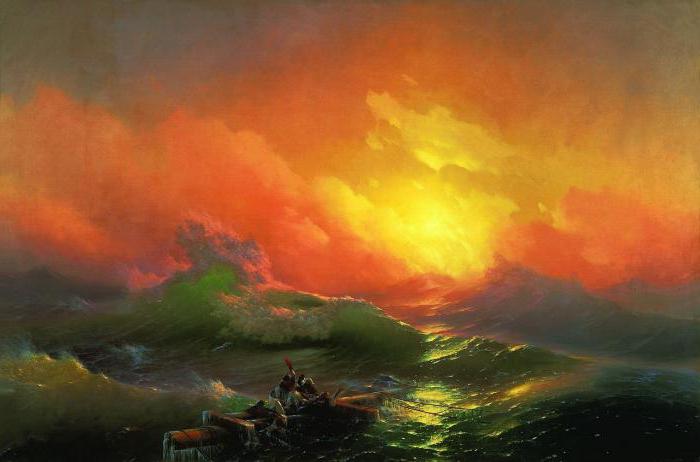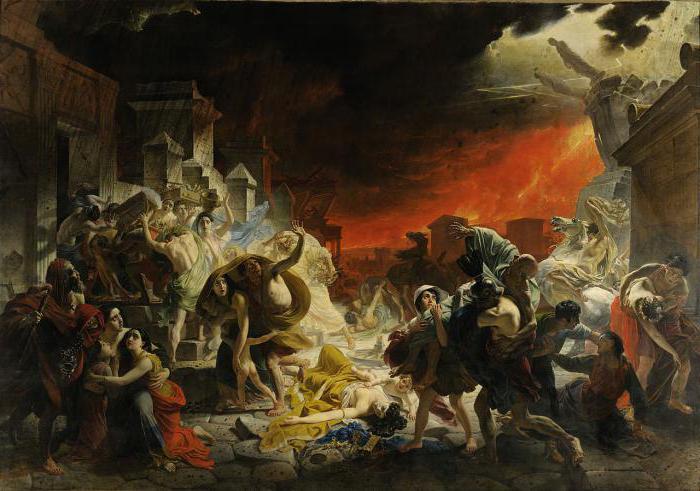The State Russian Museum in St. Petersburg is the largest collection of paintings by Russian artists, numbering more than 400 thousand works. A similar collection of Russian art in the world is no more.
Creation of the Russian Museum
The decree on the establishment of the museum was published in 1895. For this, Mikhailovsky Castle and the garden around, and services, and outbuildings were purchased. By decree, all works already acquired by the museum cannot be sold or transferred to anyone. They should always be in the collection. In 1898, the State Russian Museum opened for visitors . For three years, St. Petersburg has been looking forward to this event. It received works from the Academy of Fine Arts, the Hermitage, the Winter Palace and private collections. The initial exposure was not extensive.
After the revolution
The collection was constantly replenished, and the area of the museum was expanded through the addition of new premises. During the Patriotic War, all the most valuable works were evacuated and did not suffer at all. Those that remained in the besieged city were carefully packed and stored in basements. They also remained completely intact. The State Russian Museum completely coped with such a difficult task - to preserve the entire exposition, in which there were already more than seven thousand exhibits.
Museum Growth
New arrivals were actively added in the 50s. He placed the State Russian Museum of Art in the Mikhailovsky Palace, and in the Engineering Castle, in the Benois building, as well as other buildings. They have a section of ancient Russian art with priceless works of Rublev, Dionysius and several other icon painters of the early and late Middle Ages. The State Russian Museum holds works of the 18th – mid-19th centuries.
The photo shows the work of D.G. Levitsky "Portrait of E.I. Nelidova." The museum is rightly proud of the completeness of the paintings presented to visitors. Enumeration of the names and surnames of our outstanding and ingenious artists will take up a lot of space. The State Russian Museum is widely represented in the works of the mid and late 19th century, as well as the work of the artists of the World of Art and futurist artists, who also make up the pride of the museum. The whole hall is dedicated to the works of
A.N. Benoit, artist, art critic, decorator.
In the photo A.N. Benoit "Parade in the reign of Paul I." The museum's collection contains paintings by Soviet artists of all periods of the existence of the Soviet Union. The State Russian Museum is currently collecting and exhibiting new, unconventional works. This department, dealing with the latest trends, was created about thirty years ago.
Famous canvas
The exposition is the "Black Square". The State Russian Museum acquired it already with scandalous fame and placed it in the Benoit building.
To create a scandal was the task of futuristic artists, and then supermatists, to attract attention. Their predecessor was Herostratus, who, in order to remain for centuries, burned the temple. The main desire of Malevich and his associates is to destroy everything: we have freed ourselves from everything that was before, and now we will do art in a clean, even, scorched place. Initially, Malevich made a black square as a piece of scenery for the opera. Two years later, he created a theory proving that it is above everything (supermatism), and denying everything: both form and nature. There is simply art out of nothing.
The impressive 1915 exhibition
At the exhibition "0.10" there were paintings consisting of squares, crosses, circles, and in this room in the upper right corner, where the icons are hung, Malevich hung up his square.

What is important here? The square or the place where he is hanged? Of course, the place was more important than what was painted, especially when you consider that it was written "nothing." Imagine “nothing” in the place of God. It was a very significant event. It was a phenomenally talented PR move, thought through to the end, because we are not talking about what is depicted there. The statement was this - nothing, blackness, emptiness, darkness instead of God. “Instead of the icon that leads up to the light - the path to darkness, to the hatch, to the basement, to the underworld” (Tatyana Tolstaya). Art has died; here is a piece of nonsense instead of you. You are ready to pay money for it. Malevich's “Black Square” is not an art, but a brilliant deed of a very talented seller. Most likely, the "Black Square" is just a naked king, and this is worth talking about, and not about the depths of comprehension of the world. The Black Square is not an art because:
Where is the talent for feeling?
Where is the skill? Anyone can draw a square.
Where is the beauty there? The viewer must understand for a long time what this means, and never understand.
Where is the violation of traditions? There are no traditions.
Thus, if you look from this point of view, we see what happened and happens with art that breaks with sincerity, which begins to appeal to intellect, that is, “I think for a long time what to do to make the scandal happen” . A normal person asks himself the question: “Why did he do this? Would you like to earn money or would you like to express some of your feelings? ” The question of sincerity arose because the artist thinks how to sell himself. The pursuit of novelty leads art to complete pointlessness, and this intellectual desire comes from the head, not from the heart. Malevich and others like him were looking for ways of scandals and sales, which is now raised to a professional height. It is very important to bring a theory to your creation and add an incomprehensible long smart name, which is more important than the image. For some reason, what is incomprehensible to a person is considered talented in our society. The absence of a spiritual beginning in Black Square is undoubted for many. A sign of time and skillful trade in yourself is the Black Square. The State Russian Museum could not miss such a "talking" work.
Drama at sea
In 1850, Aivazovsky created the large-scale canvas "The Ninth Wave." The State Russian Museum now exhibits this work.

A powerful wave hangs over the wreckage of the ship. Mankind is represented in this picture in the form of unfortunate sailors who, on the remainder of the mast, not suitable for swimming, desperately cling to it, while the wave mercilessly wants to swallow it. Our feelings are doubled. They are absorbed in the rise of this huge wave. We enter along with its upward movement and experience tension between the scallop and the force of attraction, especially at the moment when the top of the wave breaks and turns into foam. Val is aimed at those who invaded this element of water without demand. Sailors act as an active force that penetrates through the waves. You can try to consider this composition as a picture of harmony in nature, as a picture of a harmonious combination of water and earth, which is not visible, but it is present in our consciousness. Water is a fluid, changeable, unstable element, and the earth as the main object of hope is not even mentioned. This is, as it were, the impetus for the active role of the viewer. This is a picture of the universe, which is shown through the landscape. The waves on the horizon look like mountains covered in haze, and they, more gentle, are repeated closer to the viewer. This leads to the rhythmic ordering of the composition. Striking color, rich in shades of pink and purple in the sky, and green, blue, purple in the sea, penetrated by the rays of the rising sun, bringing joy and optimism. One of the gems of the collection is the romantic work The Ninth Wave. The State Russian Museum has a masterpiece written by young Aivazovsky.
Tragedy on earth
If in the previous picture two elements were involved, water and wind, then on the next canvas earth and fire menacingly appear - this is “The Last Day of Pompeii”. The State Russian Museum received it from the collection of the Academy of Arts.

Painted in 1834 and exhibited in Rome, the painting made a splash among Italians, as subsequently among Russian viewers. Pushkin, Gogol, Baratynsky devoted heartfelt lines to her. Why is this work relevant today? With the help of plastic movements, turns of bodies and heads, and the dynamics of a colorful palette, the artist revived the events of long past millennia. We are involved in the terrible experiences of people who are about to die in the lava of fire caused by a volcanic eruption and a powerful earthquake. Are there no such tragedies these days? The classical form of the work is perfect, the workmanship is excellent, which makes one recall the names of the artists of the High Renaissance. Karl Bryullov’s masterpiece captures with its beauty, despite the fact that the death of ancient civilization is depicted here.
Museum in modern time
If the museum originally consisted of the Imperial palaces, now it is a whole ensemble, unusually beautiful, which is a cultural center, since it solves scientific and educational tasks. From the depths of centuries the heritage of great painters has come down to us. Classical, romantic, everyday, genre stores State Russian Museum works. The photo shows us the main building - Mikhailovsky Palace.
This living room was rebuilt to store the work of the brush masters.
The ensemble adjacent to the palace
The State Russian Museum is housed in six architectural monuments of the 18-19th centuries, which is complemented by the Summer and Mikhailovsky Gardens, in which visitors can admire not only strict regular plantings of bushes and trees, but also beautiful sculptures. Guided tours are held in the museum buildings, as well as additional services are provided by a lecture hall, a cinema hall, an Internet class, a cafeteria equipped to receive disabled people.